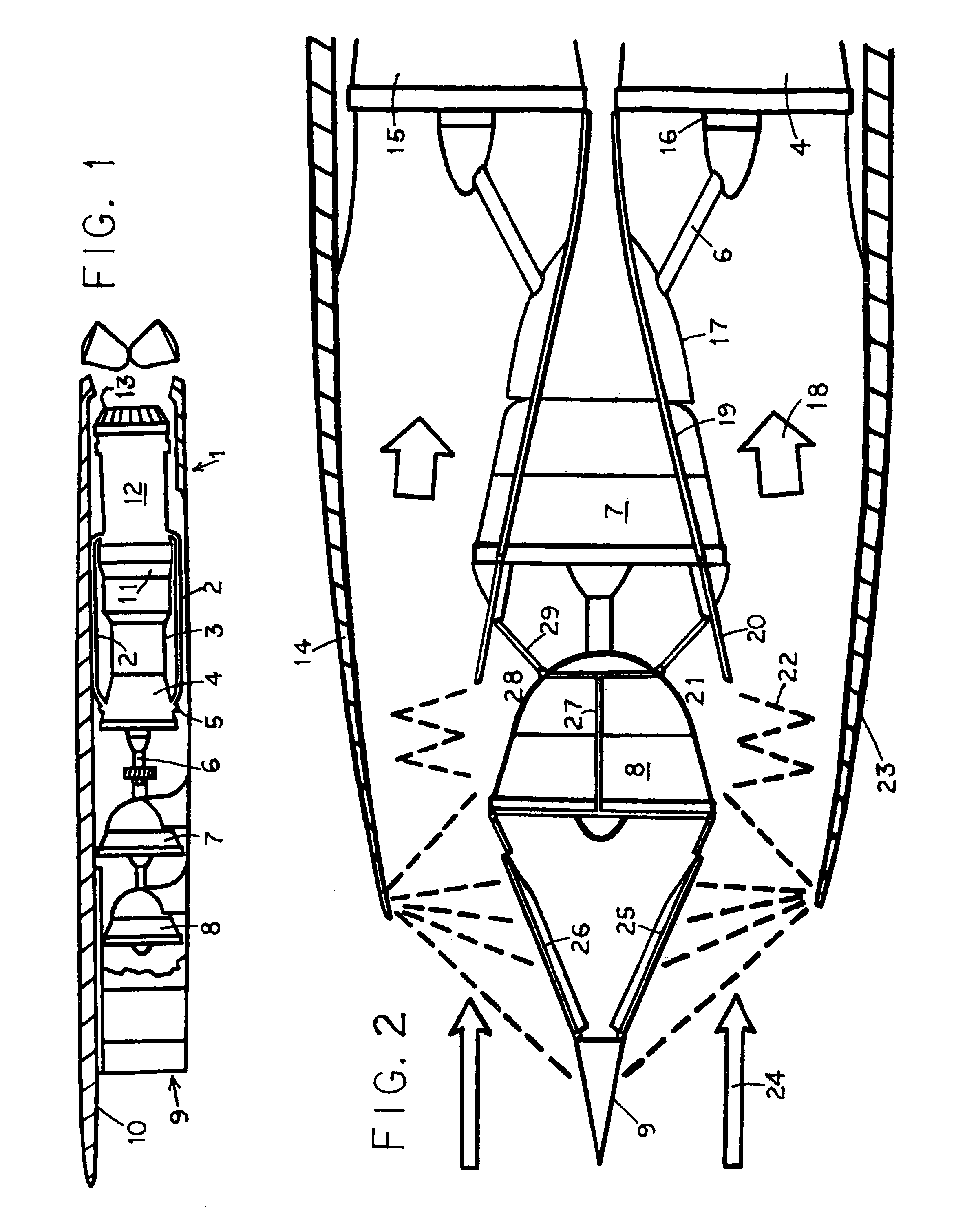Mass flow increase at takeoff in supersonic airliner
a supersonic airliner and mass flow technology, applied in the field of supersonic aircraft, can solve the problems of reducing the jet velocity out of the exhaust nozzle, and achieve the effects of reducing noise, and reducing the pressure in the jet pip
- Summary
- Abstract
- Description
- Claims
- Application Information
AI Technical Summary
Benefits of technology
Problems solved by technology
Method used
Image
Examples
Embodiment Construction
[0024]This document applies to a supersonic airliner powered by turbojet engines. Turbojet engines provide efficient thrust at Mach 2 cruise, but are very noisy at takeoff because the jet exhaust velocity is high. A solution known in the art is to transfer some energy out of the turbojet cycle at takeoff an order to power a remote fan. The fan output is discharged for thrust independent of the turbojet. Total air mass flow can be doubled, while the turbojet's exhaust jet velocity is decreased. The net thrust stays the same, but the noise is reduced.
[0025]The invention is concerned with the engine nacelles and their contents. Each nacelle houses two turbojet engines. FIG. 1 is a side view of such a nacelle 1 with its side wall broken away to show the contents. Two-spool turbojet 3 is visible, with its low pressure (“LP”) compressor 4 in front. Nacelle 1 is inspired by the example of the Concorde Mach 2 airliner because nacelle 1 similarly hangs below wing 10 seen in cross section. Th...
PUM
 Login to View More
Login to View More Abstract
Description
Claims
Application Information
 Login to View More
Login to View More - R&D
- Intellectual Property
- Life Sciences
- Materials
- Tech Scout
- Unparalleled Data Quality
- Higher Quality Content
- 60% Fewer Hallucinations
Browse by: Latest US Patents, China's latest patents, Technical Efficacy Thesaurus, Application Domain, Technology Topic, Popular Technical Reports.
© 2025 PatSnap. All rights reserved.Legal|Privacy policy|Modern Slavery Act Transparency Statement|Sitemap|About US| Contact US: help@patsnap.com



